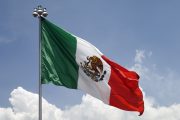
Both Canada’s and Mexico’s executive branches have formally begun the process of asking their country’s legislative bodies to ratify the USMCA.
On Wednesday, Canadian Minister of Foreign Affairs Chrystia Freeland presented a “ways and means” motion to the House of Commons in Canada’s Parliament that allowed for Prime Minister Justin Trudeau to introduce bill C-100, “An Act to implement the Agreement between Canada, the United States of America and the United Mexican States” (otherwise known as the “CUSMA Implementation Act”). The Canada-United States-Mexico Agreement (CUSMA) is the Canadian government’s official name for the USMCA.
Canada’s CUSMA Implementation Act, much like the anticipated USMCA Implementation Act that is expected to be introduced in the U.S. Congress, sets out changes required to be made to Canadian federal law and regulations in order for the new trade accord to go into effect. This includes repealing provisions of existing Canadian laws and regulations regarding the North American Free Trade Agreement (NAFTA) and replacing them with new updated provisions for CUSMA/USMCA. Once the CUSMA Implementation Act receives Royal Assent, it will become Canadian law.
The next morning, Mexican President Andrés Manuel López Obrador (AMLO) announced in a news conference that later today (Thursday) he was going to summon Mexican senators for an extraordinary session and officially send them to the text of the USMCA to begin ratification.
Whereas Canada’s name for the USMCA is CUSMA, the Mexican government calls it the Tratado entre México, Estados Unidos y Canadá (T-MEC), which is Spanish for the Mexico-United States-and-Canada Treaty. Since Mexico regards it as a treaty, it only requires a simple majority approval from the country’s upper legislative chamber, the Senate of the Republic, in order to be ratified.
“Today the respective information will be sent, so that the Senate of the Republic ratifies the free trade treaty with the United States and Canada. It is the procedure that remains to be done, the ratification of the Senate, and in a respectful manner, because it is an independent, autonomous power [of the Senate], [it should] consider convening for an extraordinary period for its approval,” AMLO said.
In his remarks, AMLO also praised the USMCA for the amount of investments and high-paying jobs it will bring to Mexico.
With Canada and Mexico officially starting the process for their respective ratifications of the USMCA, it will likely not be long before a USMCA Implementation Act is introduced in Congress. However, the USMCA is much more than a simple agreement for “free trade” between three countries; it is the architecture for the regional and economic integration of North America, similar to the early trade deals and treaties in Europe that gradually morphed into the supranational European Union of today.
When the leaders of all three countries signed the USMCA/CUSMA/T-MEC in Buenos Aires, Argentina, on November 30, 2018, then-President of Mexico Enrique Peña Nieto of Mexico emphasized how it would consolidate the economic integration of the continent: “The renegotiation of the new trade agreement sought to safeguard the vision of an integrated North America, the conviction that together we are stronger and more competitive…. The Mexico-United States-and-Canada Treaty gives a renewed face toward our integration.”
Jobs are just the tip of the iceberg of what the United States stands to lose. If the USMCA/CUSMA/T-MEC is ratified by all three countries, the United States, along with Canada and Mexico, face losing their national sovereignty to a supranational regional order on the road to world government. A country may always rebound from a bad economy, but it cannot recover from its loss of sovereignty.
Image: Ruskpp via iStock / Getty Images Plus





